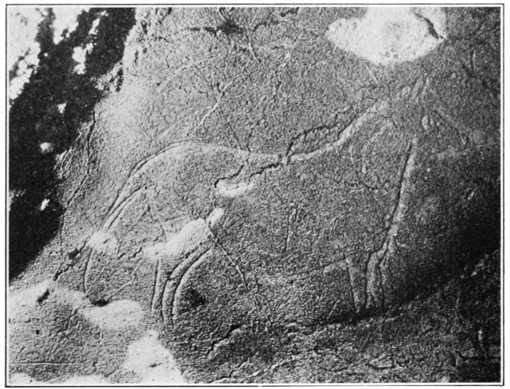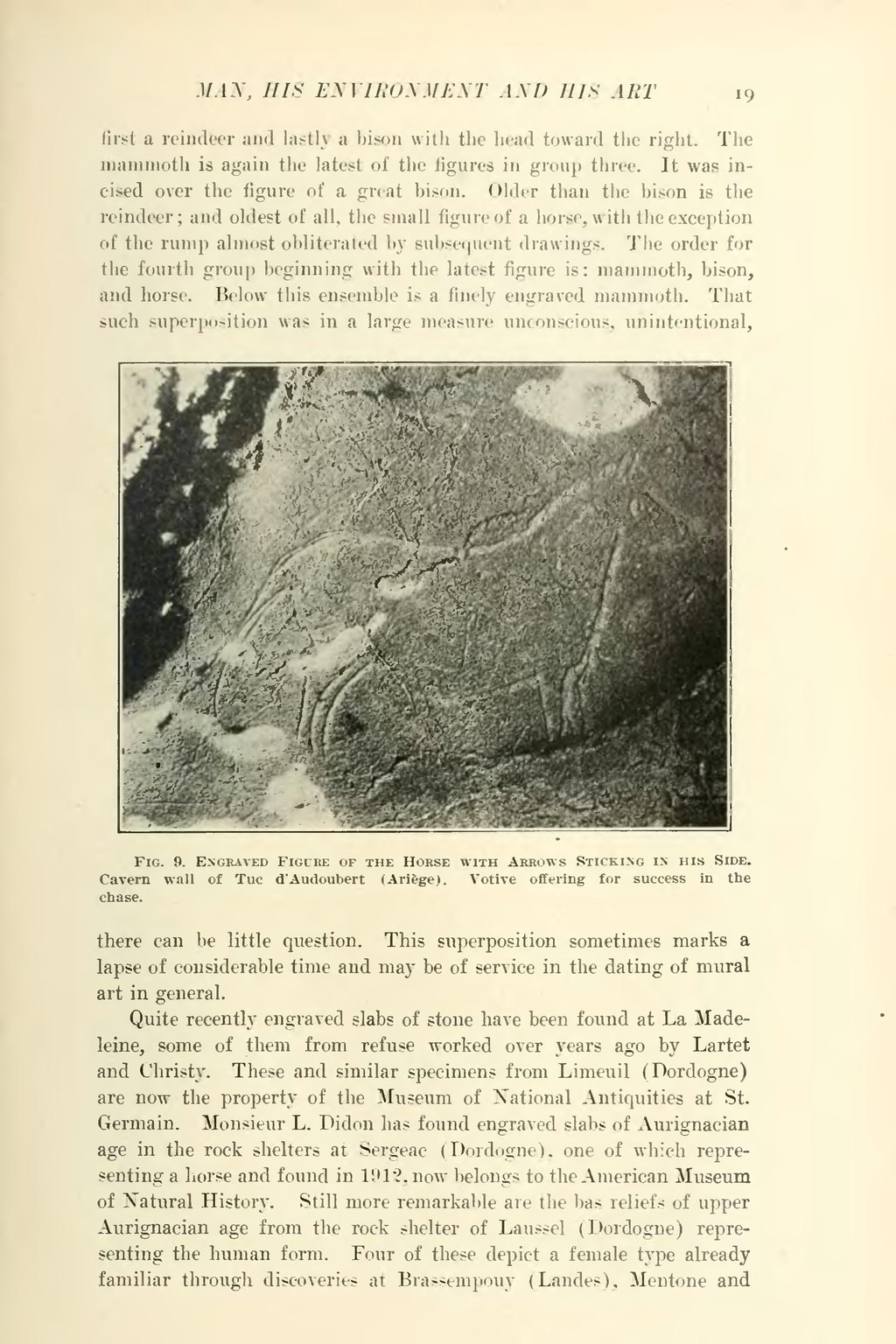first a reindeer and lastly a bison with the head toward the right. The mammoth is again the latest of the figures in group three. It was incised over the figure of a great bison. Older than the bison is the reindeer; and oldest of all, the small figure of a horse, with the exception of the rump almost obliterated by subsequent drawings. The order for the fourth group beginning with the latest figure is: mammoth, bison, and horse. Below this ensemble is a finely engraved mammoth. That such superposition was in a large measure unconscious, unintentional,

there can be little question. This superposition sometimes marks a lapse of considerable time and may be of service in the dating of mural art in general.
Quite recently engraved slabs of stone have been found at La Madeleine, some of them from refuse worked over years ago by Lartet and Christy. These and similar specimens from Limeuil (Dordogne) are now the property of the Museum of National Antiquities at St. Germain. Monsieur L. Didon has found engraved slabs of Aurignacian age in the rock shelters at Sergeac (Dordogne), one of which representing a horse and found in 1912, now belongs to the American Museum of Natural History. Still more remarkable are the has reliefs of upper Aurignacian age from the rock shelter of Laussel (Dordogne) representing the human form. Four of these depict a female type already familiar through discoveries at Brassempouy (Landes), Mentone and
